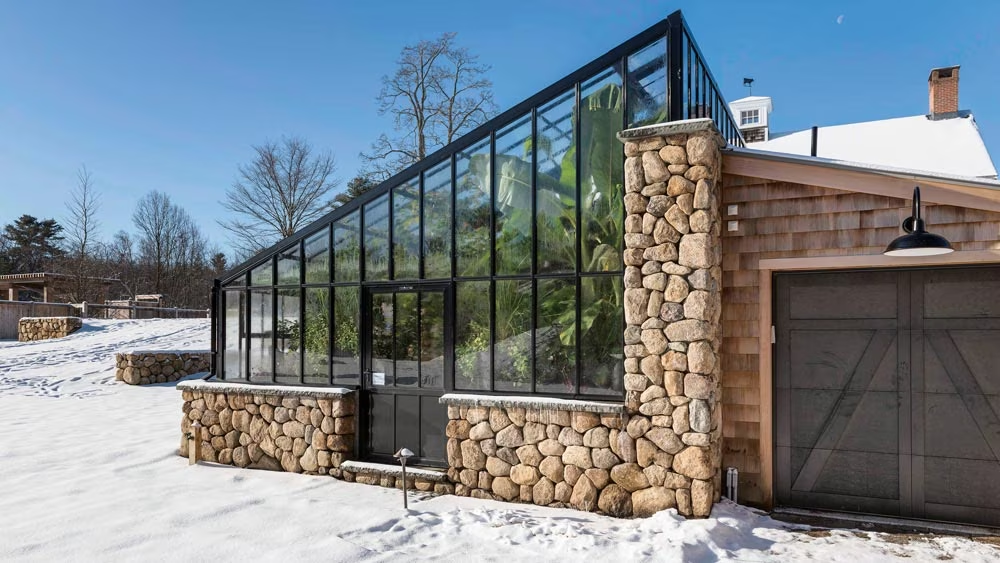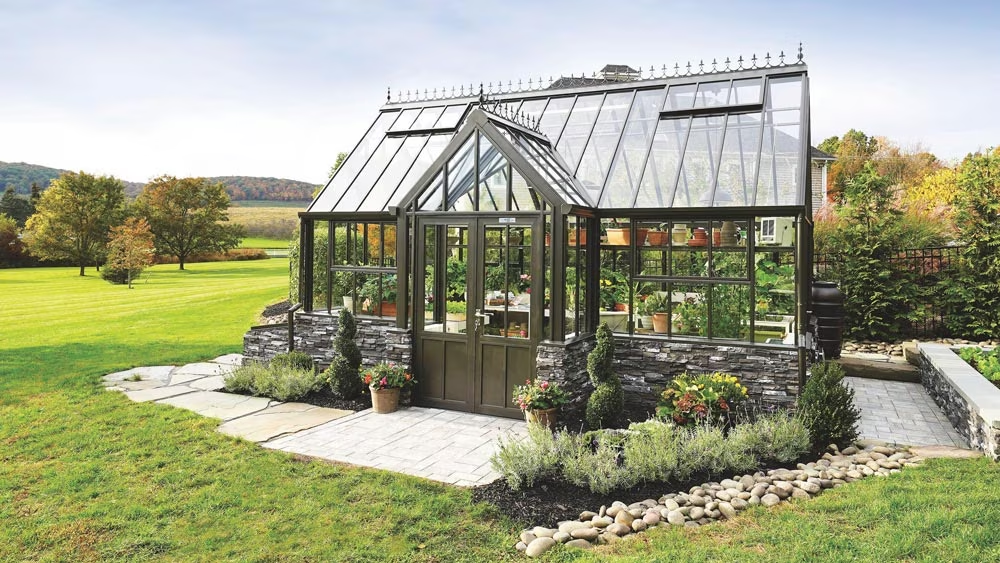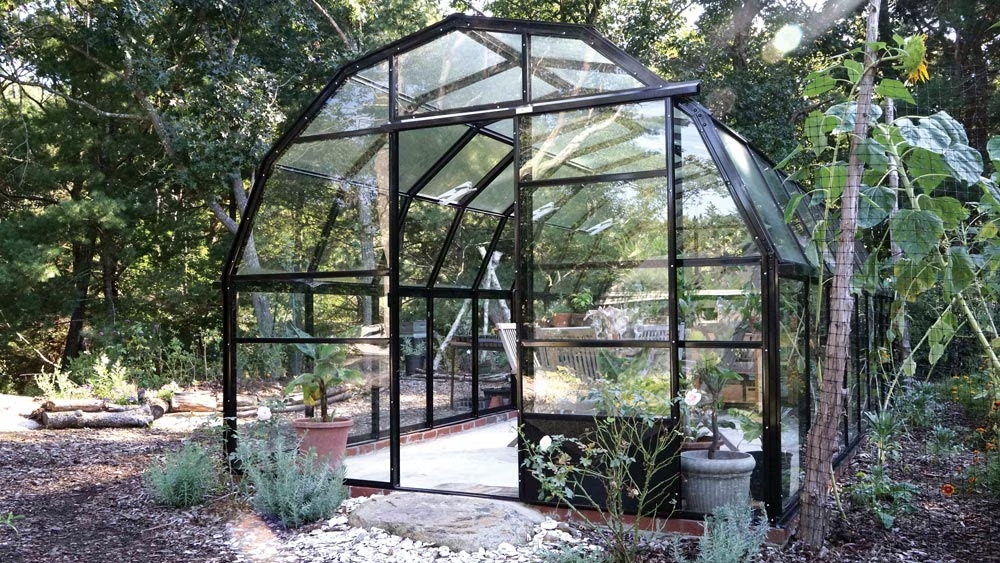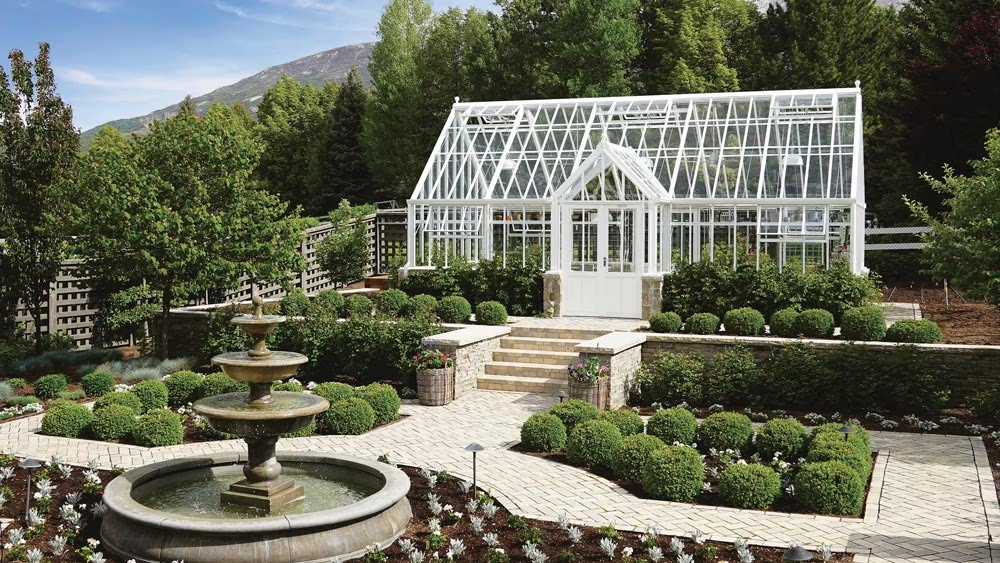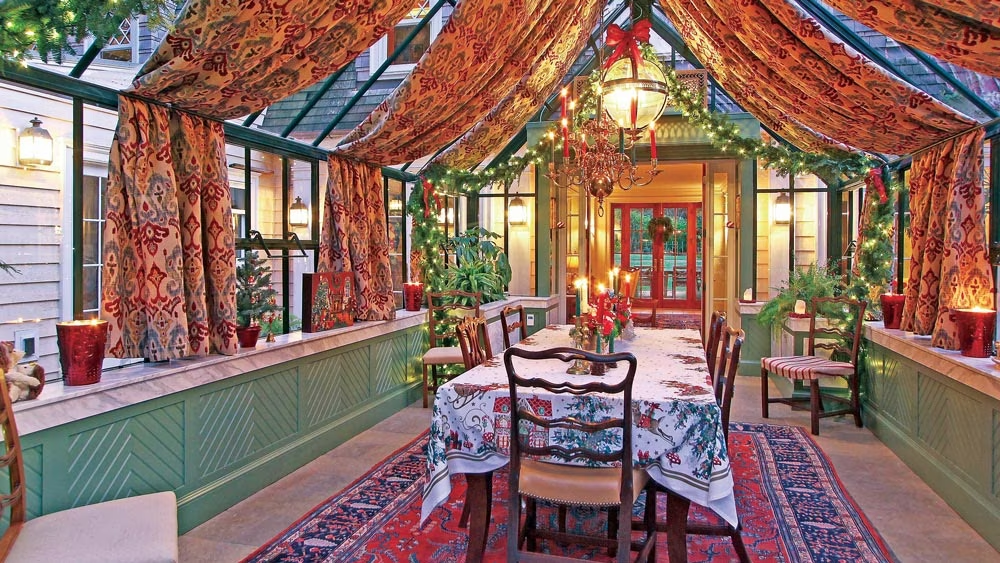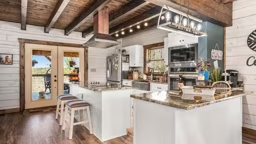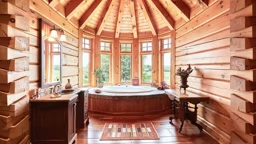From serious homesteaders to those simply looking to adopt a more “biophilic” lifestyle with a home design that reflects it, a greenhouse or glasshouse in the garden is both a practical and whimsical addition.
With the rise of nature-centric design, more time at home and prioritization of work-life balance and hobbies via dedicated spaces inside (and outside) the home, it only makes sense that Hartley Botanic, an England-based greenhouse and glasshouse provider, has reported a boom in U.S. sales since 2021. If you, too, are considering adding a greenhouse or glasshouse to dial up your grand garden plans, we’ve got a few pointers to help you achieve your dreams (no green thumb required – yet!).
Verdant Vocab
If a glasshouse is a house made of glass, then what is a greenhouse? According to Surrey Hills Garden Buildings, “glasshouse” is a broader category — quite literally a structure made primarily of glass in which the plants inside grow faster. The category includes all kinds of structures and is often commercial. Greenhouses, on the other hand, are often smaller and domestic in nature.
Size It Right
First, you’ll need to assess: What does your property have room for? Compact cottage gardens may only allow for a petite space for potting. The experts at Hartley Botanic advise that a standard 6-by-8-foot structure offers plenty of space for typical greenhouse gardening activities. However, if you can scale up to an 8-by-10 or 10-by-12 unit, the extra space can’t hurt.
Which brings us to the second consideration: What’s your interest level? If you’ve got garden parties and robust planting projects in mind, you’ll likely need to shop for a scaled-up structure. Plus, a larger model will allow room for your passion to grow with your plants. If your property allows for a spacious greenhouse, even an “orangery,” embrace the opportunity to expand your hobby in the future, particularly as you age into retirement.
Location, Location, Location
To reap the full benefits of a greenhouse’s inherent design benefits, you’ll want to maximize its position in the sun. Freestanding greenhouses can be sited to maximize light, with the long side running east to west. For “lean-to” style greenhouses, which are placed against another structure, south-facing is ideal. You’ll also need to identify if you need, want and can have access to water and electricity, and if so, you’ll need to position your greenhouse close enough to supply sources for those.
Note: Depending on the size, scale, function and location, your greenhouse may come with zoning or even tax implications. Be sure to check with your local zoning commission to find out if you’ll need permits to construct and maintain a greenhouse.
Make It Multipurpose
Aside from budget, space and permitting, you’ll want to consider what you’ll actually be doing with your gorgeous new greenhouse. From seed starting to al fresco entertaining, greenhouses are the kind of flexible space that can easily be catered to your interests and lifestyle. Are you tending a collection of rare orchids, growing your own food, storing tools, starting seeds or a little of everything? A greenhouse gives you the flexibility to pursue any and all of these as opposed to a garden shed, no matter the climate. Customization opportunities, like internal partitions to create multiple workspaces or altered or increased doors and windows, mean you can craft a structure that’s just right for your aesthetic, abilities and activities.
Shop Around
When it comes to cost, you can expect to spend anywhere from a couple hundred dollars on a portable, easy-to-DIY version like the Aluminum Polycarbonate Portable Walk-In Garden Greenhouse from Outsunny to several thousand for magnificent, architecturally inspired designs like those from companies like Hartley Botanic, Surrey Hills Garden Buildings and Cedar-Built Greenhouses, all of which offer custom creations as well.
Timeless is Trending
Much like log and timber homes, greenhouses boast an enchantingly timeless sensibility. That being said, they’re not without trends. As part of their 2023 report, Hartley Botanic predicts a move to traditional styles despite contemporary designs’ reign in recent years. The company’s Victorian models are projected to be the most popular, “with particular interest predicted in its Lodge, Terrace and Villa structures” the report details, noting growing interest over the last two years. Additionally, the report forecasts a move to wellness-centric design, with customers “curating the interiors of their greenhouse spaces so they function as havens of calm and relaxation.”
Sounds like the exact space you’d want in a forever home.




